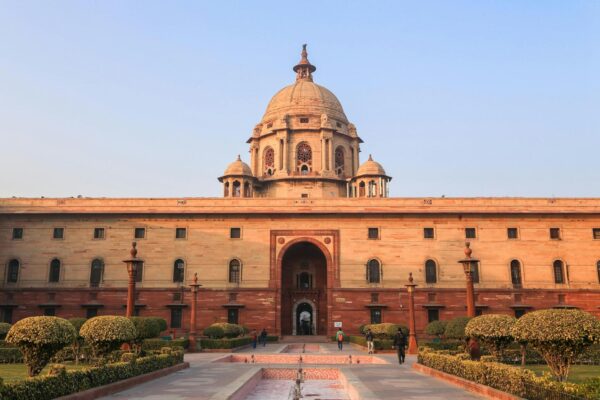Introduction to the constitution

The Constitution is the supreme law of a country. It is a written document that outlines the fundamental principles, structures, and functions of government. The Constitution defines how power is distributed among different branches of government—executive, legislative, and judiciary—and protects the rights and freedoms of citizens.
In democratic countries like the United States, India, or South Africa, the Constitution plays a crucial role in ensuring justice, equality, and liberty. It limits the powers of the government and guarantees basic human rights.
A Constitution usually includes:
- Preamble: An introduction stating the goals and guiding values of the nation.
- Articles/Chapters: Sections explaining the structure of government and distribution of powers.
- Fundamental Rights and Duties: Legal rights and responsibilities of citizens.
- Amendment Process: Rules for how the Constitution can be changed over time.
The Constitution is not just a legal document—it reflects the values, history, and aspirations of a nation and serves as the foundation for all laws and governance.

The Constitution of India is the supreme legal document that defines the structure, powers, and responsibilities of the government, as well as the rights and duties of its citizens. Adopted on November 26, 1949, and coming into effect on January 26, 1950, it is one of the longest written constitutions in the world. The Constitution of India is the bedrock of the country’s democratic framework and ensures that the country functions as a sovereign, socialist, secular, and democratic republic.
Historical Context
The roots of India’s Constitution lie in the struggles for independence from British colonial rule. During the British era, various commissions and acts such as the Government of India Act 1935 attempted to regulate India’s governance. However, these laws were far from meeting the aspirations of the Indian population. After gaining independence in 1947, the need for a robust legal and political framework to govern the country was paramount.
The Constituent Assembly was formed in 1946 to draft the Constitution. Dr. B.R. Ambedkar is often recognized as the principal architect of the Constitution, although it was a collective effort that included notable figures like Jawaharlal Nehru, Sardar Patel, and Maulana Abul Kalam Azad. The assembly deliberated over the document for nearly three years, incorporating diverse viewpoints and philosophies.
Structure of the Constitution
The Constitution of India consists of a preamble, partitions, and schedules. It contains 448 articles divided into 25 parts, and 12 schedules. The Constitution is organized into sections that outline the structure of governance, the distribution of powers, and the protection of individual rights.
Preamble
The Preamble of the Constitution expresses the intentions and aspirations of the people of India. It declares India to be a sovereign, socialist, secular, and democratic republic that upholds the principles of justice, liberty, equality, and fraternity. The preamble plays a crucial role in interpreting the Constitution.
Fundamental Rights
One of the key features of the Indian Constitution is the Fundamental Rights guaranteed to all citizens. These rights, enshrined in Part III, are vital in securing individual freedoms and liberties. They include the Right to Equality, Freedom of Speech and Expression, Right to Life and Personal Liberty, and Protection from Discrimination.
These rights are justiciable, meaning citizens can approach the judiciary if they feel their rights have been violated. However, these rights are subject to reasonable restrictions for the larger public interest, such as national security and public order.
Directive Principles of State Policy
The Directive Principles of State Policy (DPSP), outlined in Part IV, are guidelines for the government in framing laws and policies. While they are not enforceable in a court of law, they serve as the moral compass for governance. The principles aim to reduce inequality, promote social justice, and ensure the welfare of citizens.
Fundamental Duties
Part IVA of the Constitution emphasizes the Fundamental Duties of citizens. Inspired by the ideals of the freedom struggle, these duties encourage citizens to contribute positively to society, promote national unity, and respect the Constitution’s values.
Structure of Government
The Constitution of India establishes a parliamentary system of government based on the British model, with a bicameral legislature. The Union Government consists of the President, the Parliament (Lok Sabha and Rajya Sabha), and the judiciary. Similarly, the State Governments have their own legislature, executive, and judiciary.
The Constitution divides powers between the Union and States, creating a federal system of governance, with a strong centralizing tendency. The Union Government is empowered to legislate on subjects in the Union List, while states have authority over matters in the State List. Some issues are governed by the Concurrent List, where both levels can legislate.
Amendments
The Constitution of India is a living document and can be amended to reflect changing societal, political, and economic needs. Amendments can be made by the Parliament, but in some cases, approval from a majority of the states is required. Over the years, the Constitution has been amended multiple times, with significant changes like the abolition of privy purses, the inclusion of the Right to Education, and the introduction of reservations for socially and economically backward sections.
Judicial Review and the Role of the Judiciary
The Judiciary plays a pivotal role in interpreting the Constitution and safeguarding the fundamental rights of citizens. The Supreme Court of India is the highest court in the country and has the power of judicial review, meaning it can strike down any law or executive order that it deems unconstitutional. The judiciary also ensures that the government remains within the bounds of its constitutional powers.
Conclusion
The Constitution of India is not just a legal document but a vision of the kind of society that the framers aspired to create. It lays the foundation for a democratic, inclusive, and just society, where every individual is entitled to the basic rights and freedoms. While the Constitution has evolved with time, its core principles remain steadfast in guiding India toward justice, equality, and liberty. Through its careful balance of rights, duties, and governance structures, the Constitution of India remains one of the most respected and influential documents in the world today.
